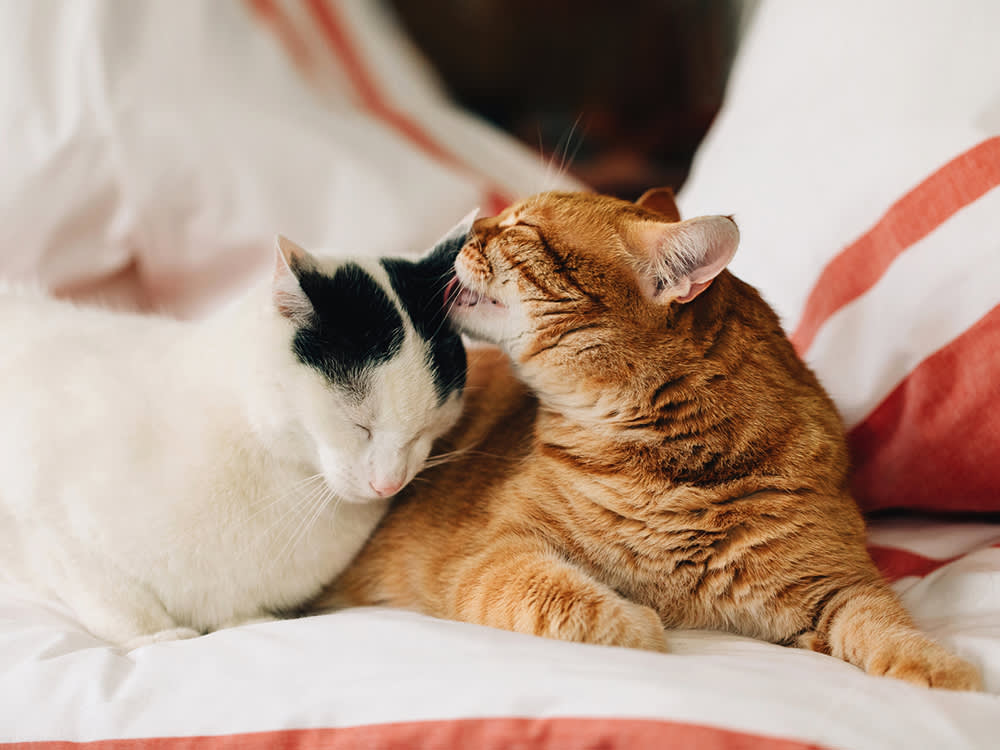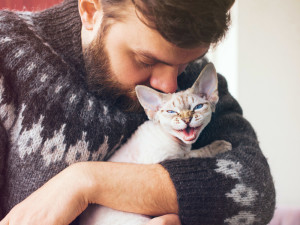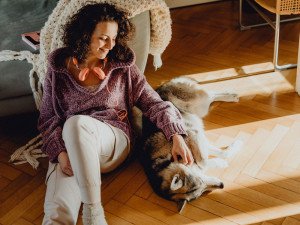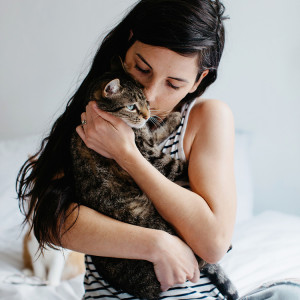Cats Aren’t Loners, After All
Cat behaviourist Kristiina Wilson on the importance of socialising cats

share article
Cats have long been stereotyped as solo creatures. When compared to dogs, they’re considered aloof – unless they’re being described by people with cats, who’d probably choose the word ‘discerning’. Whichever way you want to look at it, the culture has determined that cats are less eager to hang than their domesticated canine counterparts.
But that doesn’t mean they’re completely antisocial. In fact, the idea that cats are inherently aloof is a bit of a myth. Like dogs, cats require socialisation in order to live happy and healthy lives. Painting cats as loners is probably doing them more harm than good. We talked to cat behaviourist Kristiina Wilson about how everyone, felines included, needs a friend.
Kittens have a peak socialisation period
According to Wilson, kittens need to be socialised with both cats and humans at a very early age. “It’s really important for cats to be around their siblings or their mother until they’re about two months old,” she says. “They need to learn certain communication signals from each other.” Her own cat, for example, doesn’t know that hissingopens in a new tab usually means aggression, so she’ll hiss when she isn’t upset.
Wilson adds that if cats aren’t socialised while young, it can lead to single kitten syndromeopens in a new tab, which causes a set of behavioural problems that can be hard to deal with, including biting and excessive dependence.
They also need to spend time around people so they aren’t fearful in the future. A kitten’s peak sensitivity period of socialisation is from two to eight weeks of age. “That’s when it’s really important to get them around people, get them around hoovers, all the stuff that goes along with being part of a human household,” says Wilson. “That’s how you get a cat who’s very social.”
She points to another of her cats, Steve, as an example. Steve had a lot of siblings and grew up in Wilson’s busy photograph studio. Because he was meeting new people every day during this socialisation period, he’s now “the most social guy in the world”. (If you don’t believe us, watch him speak with buttonsopens in a new tab.)
Cats need companionship
As for adult cats, Wilson recommends continued socialisation. “I think all of us need friends who are of the same species. It’s very rare when you hear about people who live completely alone in the forest, and I think we’re always like, ‘Oh, that must be hard for them,’ right?“ says Wilson. “And we set our animal companions up for that exact same experience, where they’re just living alone in their homes with no one of the same species.”
She adds: “When I adopt out animals, I always make people take at least two kittens or cats unless they have an animal already at home, just because I think animals need friends.”
That said, Wilson acknowledges that some cats are antisocial, the same way some humans simply prefer to be alone. Whether or not a cat needs a friend should be considered on a case by case basis. If your cat happens to be a loner, that’s OK, too. Just be sure you’re providing them with tons of enrichmentopens in a new tab so they don’t get bored or depressed.
It’s never too late
Even when the socialisation period has passed, it’s possible to help a cat adjust to living with other cats. But whenever two cats are introduced, the process should be done slowly – and that goes tenfold for a cat who had a companionless kittenhood.
“The ideal thing about hitting that socialisation window is that’s when kittens are primed to learn things and not necessarily to be afraid,” says Wilson. “So it’ll take a lot longer and you’ll have to be a lot more patient with an older cat, but it certainly can be accomplished.”

Sio Hornbuckle
Sio Hornbuckle is a writer living in New York City with their cat, Toni Collette.
Related articles
![Maine coon cat using the litter box.]() opens in a new tab
opens in a new tabUncovered Secrets: Why Cats Don’t Always Cover Their Poo
And how you can encourage them to cover up after doing their business
![woman and dog sit on pet-friendly wood flooring in a chevron pattern]() opens in a new tab
opens in a new tabLet’s Talk Eco-Friendly Flooring Options for Pets
Wise choices make your home healthier for you and your pet
![dark-haired woman hugging cat that has imprinted on her]() opens in a new tab
opens in a new tab10 Signs Your Cat Has Imprinted On You
Feeling like you have a little shadow these days? A cat behaviourist explains why that’s happening
![grey and white cat with tongue sticking out]() opens in a new tab
opens in a new tabWhy Is Your Cat Vomiting Like They Partied All Night?
Here’s when you should worry if your cat is throwing up
![cat meowing]() opens in a new tab
opens in a new tabThe Cat’s Meow – What Does it All Mean?
How to decode your cat’s love language when one meow has many meanings





